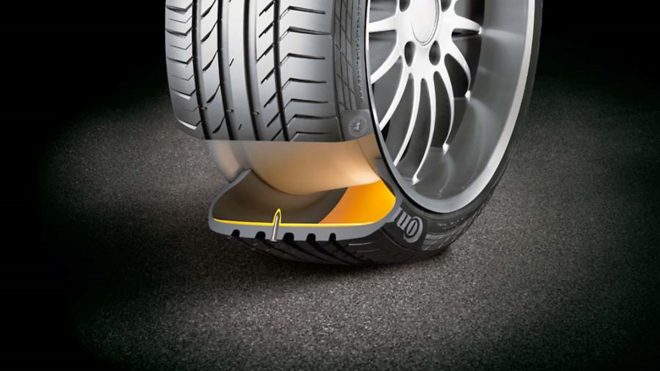One of the best innovations made in the automobile industry is run-flat tires. A product range beyond ordinary car tires- run-flat tires provide increased safety for drivers and passengers. These tires are specifically designed to run for a short distance even after a puncture, allowing you to reach the nearest auto repair shop.
These tires have reinforced sidewalls that can mask any damage in the tire. This will prevent the tire from coming off or causing damage to the wheel, and let it keep the rigid shape despite a puncture. It helps to continue driving safely even with low tire pressure, while you visit a mechanic to repair the puncture or change a wheel.
What are the types?
- Self-supporting tire: The tire wall is made of durable rubber that can support the weight of the entire vehicle when the tire pressure drops.
- Auxiliary supported tire: It comes with a special set of rims and the steel ring inside can support the weight of the vehicle.
There is a tire pressure monitoring system (TPMS) to monitor the pressure loss in tires and alert drivers in case of a puncture. The technology being used in run-flat tires has proven to be quite useful. Most standard cars today are equipped with these, as they let you drive about 80 km even with a puncture.
Here are some more advantages run-flat tires provide:
- Safety: The reinforced sidewalls help prevent tires from sagging in case of a puncture. When you drive at a good speed, a sudden burst tire can be very dangerous to people in the car. Run-flat tires solve this problem as the driver can control the car even when the tires lose air pressure.
- Driving control: It allows you to continue driving, which is the best benefit it offers. It helps reduce the accidents caused by uncertain tire blowouts while driving. The driver has complete control while they reach a repair point. You won’t be stuck in between your journey and it’s especially important for deserted roads.
- Durability: They are made of special rubber that can resist temperatures higher than those on the road. You don’t have to carry a spare tire and the tools with you anymore. This relieves some weight off your car trunk and improves fuel efficiency.
Run-flat tires can save you a lot of time and effort to change your tires on the road, especially if you’re in a rush. However, we will also walk you through the disadvantages before we conclude.
- Costly: They are more expensive than regular tires and they might burden you when you need a replacement. Every time you drive with a puncture on a run-flat tire, the tire wall is damaged and cannot be restored. So, you will have to replace them.
- Driving comfort: When compared to driving comfort, some people find regular tires more comfortable. The reason is, run-flat tires are much thinner and stiffer than regular ones. They might not absorb shocks efficiently, thereby causing discomfort to drivers.
- Suitability: Run-flat tires have a poor grip and wouldn’t be the best fit when driving on slippery or wet roads.
Bottom line:
Run-flat tires offer you safety and mobility despite a tire problem. Although run-flat tires have some features that stand out in comparison with conventional tires, you should know that when you travel on deserted roads, you might not find a repair shop. In such cases, you might find run-flat tires to be an unsuitable pick. A spare tire is what often seems to be useful in case of long instance trips on unknown roads. Always weigh the pros and cons before making your choice.

